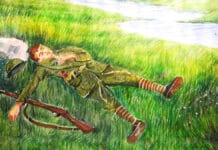Degrees of comparison refer to the different forms of adjectives and adverbs that indicate the level of comparison between two or more things. These degrees are classified into three categories: positive, comparative, and superlative. The positive degree is used to describe a noun or a verb without making any comparison, the comparative degree is used to compare two things, and the superlative degree is used to compare more than two things and indicates the highest or lowest degree of quality.
Understanding degrees of comparison is crucial for effective communication and accurately expressing comparisons. It allows writers to convey their ideas more precisely and accurately. Writing may lack clarity and fail to communicate comparisons effectively without a clear understanding of the positive, comparative, and superlative degrees.
Positive Degree
The positive degree is the simplest form of comparison, used to describe a quality or characteristic without making any comparisons. For example, “She is tall” simply states that the person is tall without comparing her height to anyone else’s. Mastering the positive degree is essential because it forms the foundation for effectively understanding and using the comparative and superlative degrees. Without a firm grasp of the positive degree, writers may struggle to convey the qualities they describe accurately. Adjectives like “beautiful,” “happy,” and “intelligent” are often used in a positive degree to describe a person or object. Likewise, adverbs like “quickly,” “carefully,” and “eagerly” can be used in a positive degree to describe how an action is performed.
- She is tall.
- The book is interesting.
One common way to compare two things in the positive degree is by using the phrase “as…as.” This structure shows that two things are equal in a certain quality. For example, we can say, “She is as beautiful as a rose, ” indicating that the person’s beauty is comparable to the beauty of a rose. Similarly, we can say, “He runs as quickly as a cheetah” to convey that his speed is equivalent to that of a cheetah. Using “as…as” helps us create vivid comparisons and adds depth to our descriptions. Common adjectives that use the positive degree of comparison with “as…as” include tall, short, strong, weak, old, young, fast, slow, big, small, and smart. By using this structure, we can create clear and concise comparisons in our writing. For example, we can say, “He is as tall as a basketball player” to describe someone’s height or “She is as smart as a scientist” to highlight someone’s intelligence. This form of comparison allows us to make our descriptions more vivid and engaging to the reader.
Comparative Degree
The comparative degree compares two things or people, indicating that one has more or less of a characteristic than the other. Comparisons using “than” include taller, shorter, stronger, weaker, older, younger, faster, slower, bigger, smaller, and smarter. For instance, we can say, “He is taller than his brother” to compare their heights or “She is smarter than her classmates” to compare their intelligence levels. The comparative degree helps us establish a hierarchy of qualities and make distinctions between different individuals or objects.
- She is taller than her sister.
- The second book is more interesting than the first.
The comparative degree is formed by adding “-er” to the adjective or using “more” before the adjective. For example, “She is taller than her sister” compares their heights, while “He is more intelligent than his colleagues” compares their intelligence levels. Whether we use the suffix “-er” or the word “more” depends on the length and structure of the adjective. Shorter adjectives, such as “tall,” often take the “-er” form, while longer adjectives, like “intelligent,” require the use of “more.”
Common adjectives that use the comparative degree include “stronger,” “faster,” “smarter,” and “happier.” These adjectives allow us to compare two or more people or things and determine which possesses a greater extent of the described quality. For example, we can say that “Usain Bolt is faster than the average person” or that “Albert Einstein was smarter than most of his peers”.
Superlative Degree
The superlative degree takes the comparison a step further by indicating the highest extent of quality among a group of people or things. For instance, we can say that “Usain Bolt is the fastest sprinter in the world” or that “Albert Einstein was one of the smartest minds of his time”. The superlative degree allows us to highlight exceptional qualities and distinguish individuals or objects as the best or most superior in their respective categories.
- She is the tallest student in the class.
- That was the most exciting movie I’ve ever seen.
In sports, we often hear about athletes who have broken records or achieved unprecedented feats, solidifying their status as the greatest in their field. Similarly, in academia, scholars who have made groundbreaking discoveries or contributed significantly to their fields are often regarded as the foremost experts or geniuses of their time. In the arts, musicians, actors, and artists who have received critical acclaim and achieved immense popularity are often referred to as the most talented or influential figures in their respective industries. The superlative degree allows us to recognize and celebrate individuals’ extraordinary achievements and abilities, elevating them to unparalleled distinction and admiration.
Using the superlative degree with the ending “-est” or the word “most” allows us to compare individuals to their peers and acknowledge their exceptional qualities. For example, the fastest sprinter in the world is recognized for their incredible speed, while the most brilliant scientist is admired for their groundbreaking discoveries. Common adjectives that use the superlative degree include “best,” “worst,” “most,” “least,” “greatest,” “highest,” “lowest,” “strongest,” “weakest,” and “smartest.” These adjectives allow us to compare and contrast individuals, emphasizing their exceptional qualities and achievements. Using superlatives helps us appreciate the outstanding contributions of these individuals and serves as a reminder of the extraordinary heights that can be reached with hard work, dedication, and talent.
| Positive | Comparative | Superlative |
| bright | brighter | brightest |
| easy | easier | easiest |
| stingy | stingier | stingiest |
| tasty | tastier | tastiest |
| weak | weaker | weakest |
| chewy | chewier | chewiest |
| soft | softer | softest |
| soon | sooner | soonest |
| steep | steeper | steepest |
| young | younger | youngest |
| close | closer | closest |
| fancy | fancier | fanciest |
| likely | likelier | likeliest |
| near | nearer | nearest |
| rude | ruder | rudest |
| gentle | gentler | gentlest |
| grand | grander | grandest |
| rich | richer | richest |
| ugly | uglier | ugliest |
| bold | bolder | boldest |
| humble | humbler | humblest |
| kind | kinder | kindest |
| foolish | more foolish | most foolish |
| busy | busier | busiest |
| dull | duller | dullest |
| hairy | hairier | hairiest |
| icy | icier | iciest |
| smart | smarter | smartest |
| crispy | crispier | crispiest |
| flat | flatter | flattest |
| new | newer | newest |
| noisy | noisier | noisiest |
| rough | rougher | roughest |
| weird | weirder | weirdest |
| curvy | curvier | curviest |
| damp | damper | dampest |
| funny | funnier | funniest |
| risky | riskier | riskiest |
| true | truer | truest |
| dense | denser | densest |
| filthy | filthier | filthiest |
| quick | quicker | quickest |
| rare | rarer | rarest |
| smoky | smokier | smokiest |
| greedy | greedier | greediest |
| gross | grosser | grossest |
| plain | plainer | plainest |
| slow | slower | slowest |
| wet | wetter | wettest |
| fat | fatter | fattest |
| pretty | prettier | prettiest |
| scary | scarier | scariest |
| deadly | deadlier | deadliest |
| proud | prouder | proudest |
| ripe | riper | ripest |
| shiny | shinier | shiniest |
| warm | warmer | warmest |
| angry | angrier | angriest |
| clever | cleverer | cleverest |
| green | greener | greenest |
| lively | livelier | liveliest |
| naughty | naughtier | naughtiest |
| brief | briefer | briefest |
| dark | darker | darkest |
| happy | happier | happiest |
| hot | hotter | hottest |
| juicy | juicier | juiciest |
| creepy | creepier | creepiest |
| fair | fairer | fairest |
| rusty | rustier | rustiest |
| tan | tanner | tannest |
| chubby | chubbier | chubbiest |
| dusty | dustier | dustiest |
| fit | fitter | fittest |
| friendly | friendlier | friendliest |
| difficult | more difficult | most difficult |
| fascinating | more fascinating | most fascinating |
| gorgeous | more gorgeous | most gorgeous |
| melodious | more melodious | most melodious |
| proper | more proper | most proper |
Irregular Adjectives
Irregular adjectives do not follow the standard “-er” or “more” and “-est” or “most” patterns. Instead, they change in a unique manner.
| Positive | Comparative | Superlative |
| good | better | best |
| bad | worse | worst |
| many | more | most |
| little | less | least |






























